Imágenes del bosque / Images of the forest.
"'Mystery in the Forest' came from Khoji Tsukamoto in Japan; a series of bird pictures of beauty and interest, with shots of heron chicks emerging from the shell outstanding" American Cinematographer, April, 1938, 173.
"Documentary. The flora and fauna in a forest in Japan. Winter landscapes and snow clearing (snow shovelled into large open baskets carried on the backs of women); swans flying over water; spring flowers with shots of Mount Fuji. A man using his fingers as a pan pipe to attract birds. The juichi (a kind of cuckoo), the nests with eggs of the grand thrush, greenfinch and the warbler. Chicks of the blue robin and snakes. A titmouse that has built her nest in a tomb. Greenhorn chicks; nests of night herons and the chicks; owls" (EAFA Database).
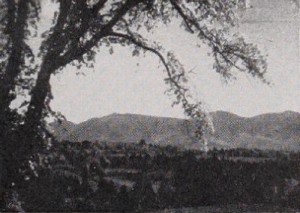
"Hamilton H. Jones has again shown his marvelous ability to combine beautiful movies and fine music on the double turntable into a cinematic whole that, in New England Autumn, carries an audience through the calm delight of fall days to a climax that has great dignity and spiritual stimulation. We see autumn in its most restful and wistful mood, and the action is slowly paced in harmony with the dying year. There is leisurely strolling in the many hued woods. The leaves on the ground are scuffed through and gently scattered. We see the things that we all like to do in the forests in autumn. Finally, in an arresting sequence of autumn fruits — great, gleaming pumpkins and ruddy apples — the music turns to the inspiriting old Dutch hymn of thanksgiving. Rising first orchestrally and then voiced by a thousand singers, the chorus ends as our eyes are lifted to the simple spire of a New England church. Here is suavity, here is intelligent movie making and here are dignity and spiritual uplift." Movie Makers, Dec. 1947, 534.
"This picture was a special delight as Miss Hill had concentrated upon pastel colors as she found them in the woods and fields. Also she brought the human element into her picture very gracefully and entertainingly." American Cinematographer, Dec. 1934, 377.
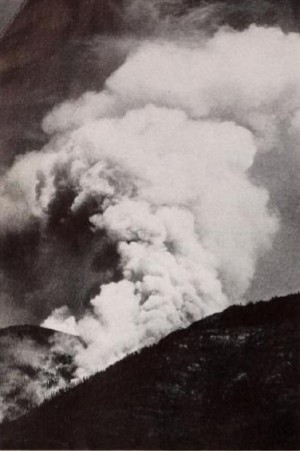
"To publicize fire prevention work of the U.S. Forest Service, R. P. Ewing, A.C.L., New York City, working in cooperation with K. D. Swan of the Service, Missoula, Mont., has, with the assistance of Frank Foltz, completed Red Hell of the Kaniksu, 400 feet, taken in the St. Joe, Kootenai and Kaniksu National Forests." Movie Makers, June 1932, 254.
"The unique wilderness of the Spatsizi Plateau, and the area's flora, fauna and scenery, as observed by guide-outfitter Tommy Walker. The film points out the negative impact of recent development in the area, and emphasizes the importance of preserving the Spatsizi. Mountain sheep, Stone sheep, Osborn caribou, moose, eagles, beaver, marmots, and many other wildlife species are shown" British Columbia Archives.
This film was produced at some time between 1956 and 1970.
"In the fall of the year, the late flowers are blooming, the evergreens have about completed their year's growth in preparation for the heavy winter, the deciduous have donned their golden mantles soon to become their winter blanket. All part of the thanksgiving for a bountiful season. The tall golden hillside trees set in a great panorama, interspersed with the dark grenes, the paths carpeted with golden leaves of varying hues of yellow, orange and red. It is here we visit the Mortons with their trailer in the pines" PSA Journal, Nov. 1959, 49.
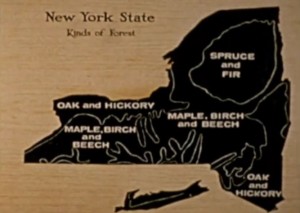
'This film presents a revelation of the beauty and colorful activity of the trees of New York State. Beautiful time-lapse pictures show the emerging buds, leaves, and flowerings on the trees. The identifying features on tree branches, flowers, fruit, and bark are shown, utilizing time-lapse photography to show the moving detail," via SUNY College of Environmental Science and Forestry.
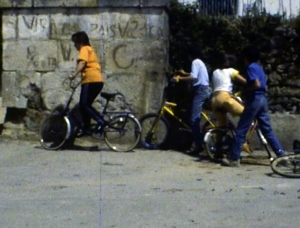
Documental corto sobre el pueblo de Villa de Corres. El filme comienza con varios paisajes de los alrededores y planos de montañas y el río. A continuación se muestra el pueblo, aparecen casas, el río, calles y algunas partes características como el Castillo, el hospital, la iglesia de San Esteban, el bebedero, la fuente , la plaza, etc. También aparecen algunas personas mayores y niños por las calles. Se comenta que es un pueblo con una población de 30 habitantes pero que es uno de los pueblos más longevos de la provincia de Álava.
Short documentary about a town called Villa de Corres. The film begins with several landscapes of the surroundings and shots of the mountains and the river. Then the film shows the town, houses, the river, streets, and some landmarks like the Castle, the hospital, the San Esteban church, the drink fountain, the fountain, the square, etc. Some older persons and children are also seen. It is said that the town only has a population of 30 persons, but that it is one of the longest-living towns in the Alava province.
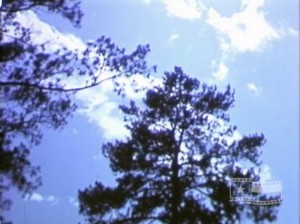
"The Texas Forest Service was faced with a grave problem. Large parts of Texas were being devastated and deforested by numerous fires. The fires were caused by the idle fancy and carelessness of backwoodsmen. Which He Hath Planted was produced for the Service by Larry J. Fisher, ACL, as part of the campaign to lead these woodsmen into more constructive paths. It is a striking example of how, with imagination, a motion picture can be constructed to fit the needs of a very special situation. Mr. Fisher and the Forest Service had to find a common ground on which to base their appeal against the pyromaniacal instinct. Realizing that, however uneducated, most people from the backwoods have both acquaintance with and veneration for the Bible, they decided to peg their entire film on quotations from the Scriptures. What they have produced is a beautiful welding of applicable Biblical passages, both spoken and sung, to forest scenes, the end result tending to promote the idea that trees are rich and wondrous manifestations of God and are not intended by Him to be destroyed by man's casual whim. The lesson is well taught. But the film imparts a sense of beauty and reverence that far outlives the immediate lesson. For that, Mr. Fisher's blending of music and word and image is responsible." Movie Makers, Dec. 1946, 486.
Total Pages: 3